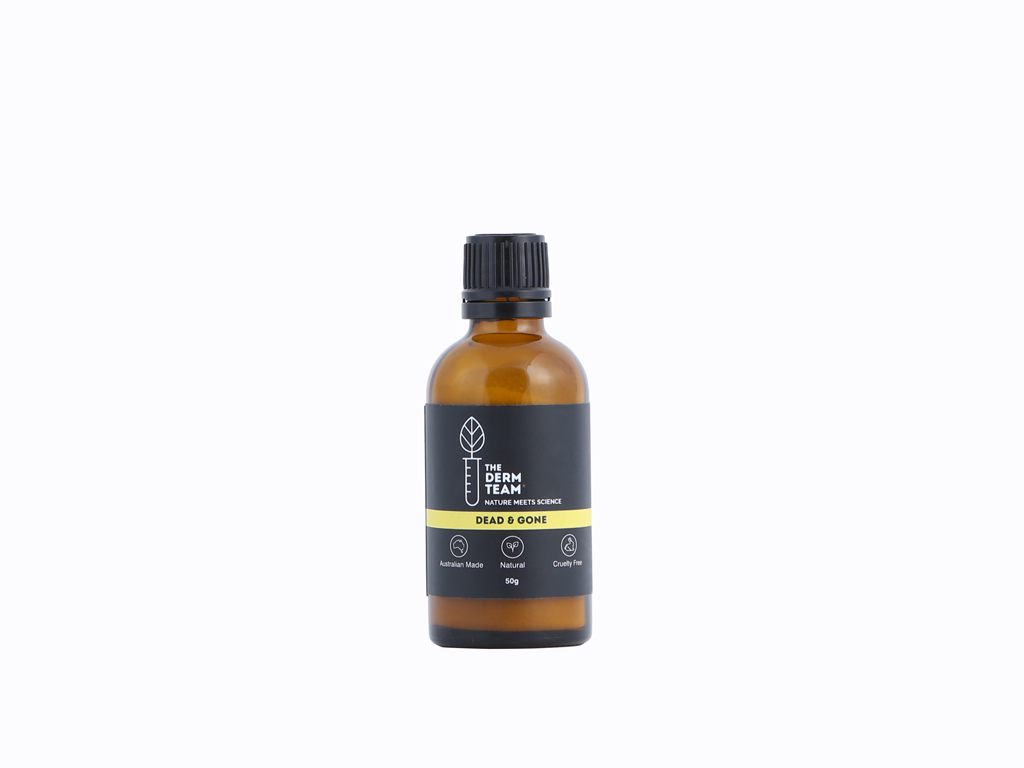In the innovative world of skincare, there seem to be so many viewpoints on how best to achieve beautiful, healthy skin. But one thing we can all agree on is that exfoliation is absolutely essential, no matter your age, ethnicity or gender. Let’s explore the difference between physical and chemical exfoliation so you can decide the best option for your skin.
Exfoliation is so important because your skin completely renews itself every 28 days. By removing old skin build-ups, you can make way from brighter, fresher-looking skin.
What is exfoliation?
Exfoliation is the removal of dead skin cells and other substances that clog the skin, including make-up and skincare products. This excess layer of debris can make your complexion look dull and coarse.
Either physical or chemical exfoliation works to remove the build-up, but each has a different way of doing so.
The difference between physical and chemical exfoliation
Physical exfoliation takes place when you rub something coarse against your skin. This mechanical action physically removes the build-up, which is then washed away.
Chemical exfoliation skips the scrubbing. Products with certain acidic ingredients are fantastic exfoliators, so revealing brighter skin is as easy as applying a serum or peel and letting it go to work!
So, is chemical exfoliation better than physical?
It really depends.
To help you decide which method to choose, we’ll look at each option a bit more closely.
Physical exfoliation – a closer look
What is a physical exfoliant?
Physical exfoliants range from exfoliating tools such as coarse exfoliating gloves, sponges or brushes, to scrubs.
There are scrubs to suit every skin type and you can find creamy or gel consistencies to suit your preferences. Some even come in a crystal form, allowing you to customise the coarseness of your scrub. The Derm Team Dead & Gone works in this way.
Remember to choose a physical exfoliant that has no plastic microbeads in it. These nasties are very bad for the environment and are being banned in various countries.
What does physical exfoliation do?

Physical exfoliation involves scrubbing the skin to remove the stratum corneum – the uppermost skin layer. This removes dead skin cells and anything else clogging your skin.
Benefits of physical exfoliation
Physical exfoliation can provide an instant lift to your look. Most people notice brighter, smoother skin right away.
This can be a great choice for people with sensitive skin because you can choose to rub very gently and experiment with the correct pressure to apply. If your skin is prone to reacting to products, you may choose to skip the stronger chemical exfoliation method.
How to use physical exfoliants
Start off gently. This will allow you to find the right amount of pressure to use. Remember, the goal is to gently remove the uppermost dead skin layer, not to scratch or irritate your healthy new skin.
For best results, exfoliate once or twice a week. More often won’t produce faster results.
Chemical exfoliation – a closer look
What is a chemical exfoliant?
Chemical exfoliants are acids that work to dissolve build-ups on your skin. They’re included in chemical exfoliation skincare products such as peels and serums.
There are two types:
AHAs (alpha-hydroxy acids) are water-soluble. They work to dissolve dead skins cells, and stronger concentrations can dissolve the whole upper skin layer. Best for anti-aging, fine lines, reducing pore size and creating a more even skin tone, look out for malic, lactic, glycolic or citric acid if you’re keen to give AHAs a try.
BHAs (beta hydroxy acids) are oil-soluble and more suitable for sun-damaged and acne- or rosacea-prone skin. They penetrate more deeply and can clear pores. Look out for salicylic acid or certain formulations of citric acid if you think BHAs are for you.
What does chemical exfoliation do?
Chemical exfoliants provide deep exfoliation.
Coarse, dull skin has developed a build-up of dead skin cells bonded together with a glue-like substance. This sits on top of new, healthy skin. Chemical exfoliants dissolve these bonds over time to reveal the fresh, glowing complexion underneath.
Benefits of chemical exfoliation
Apart from removing dull, dead skin, chemical exfoliants improve skin texture, unclog pores, decrease pore size, make surface wrinkles less noticeable, reveal a more even skin tone and even reduce inflammation associated with rosacea, acne and other skin conditions.
How to use chemical exfoliants
For instance, can you use chemical exfoliants every day?
Well, it’s best to start slowly. Try using your chemical exfoliant product every second day to start with and build up to every day as you see your skin tolerance increasing.
Always remember to use a broad-spectrum sunscreen afterwards, because your skin will be more sensitive to the sun. You’ve gone to the effort of improving your skin, it’s vital to make sure you protect it from further sun damage!
Choosing the right exfoliant for you
Both physical and chemical exfoliants can do a great job of improving the appearance of your skin, so which you choose is up to you.
If you have sensitive skin, you’re better off avoiding the strongest chemical exfoliants because these can irritate the skin, but you can start with a low percentage product and build up (remember, even those with normal skin should stick to a maximum of 10%-15% AHA).
Can you use physical and chemical exfoliation together?

Yes! The Derm Team Dead & Gone exfoliator brings you the best of both worlds. Combining a shot of Vitamin C with a mild AHA – malic acid – you can get an instant glow while knowing your skin is getting a deeper exfoliation at the same time. This formulation is gentle yet effective.
Your exfoliant comes in crystal form so you can customise the intensity of your scrub as you mix it with your favourite cleanser. Try it with The Derm Team Cleanse Me Away for a nourishing skin treatment.
Any exfoliation physical or chemical provides the benefit of erasing the dull look of old skin, revealing the beautiful younger layers underneath. You can choose either physical or chemical exfoliation – or a product that combines both!


1,803 Comments